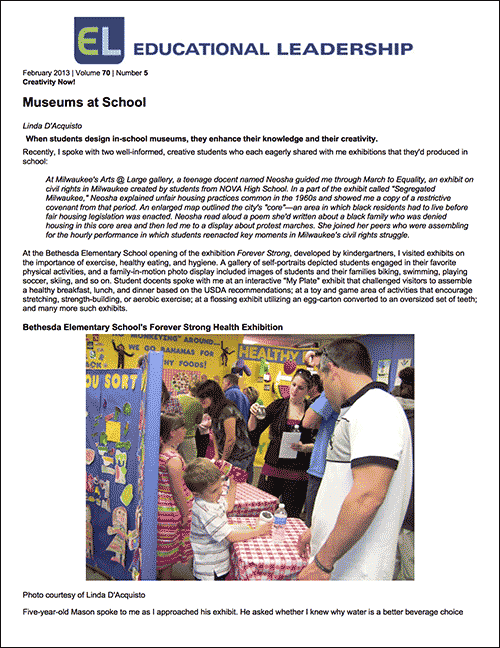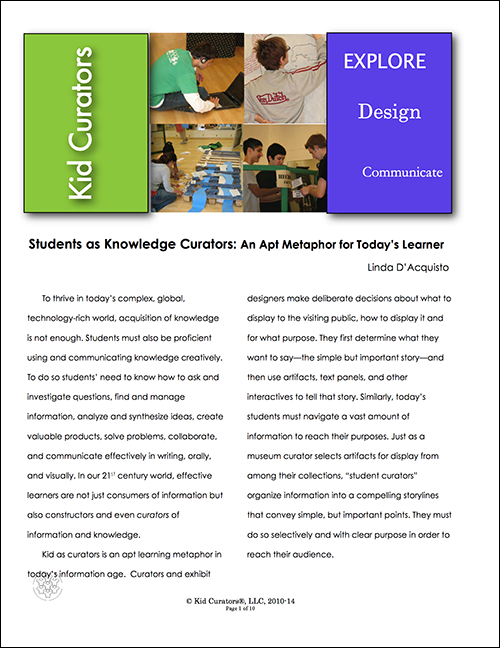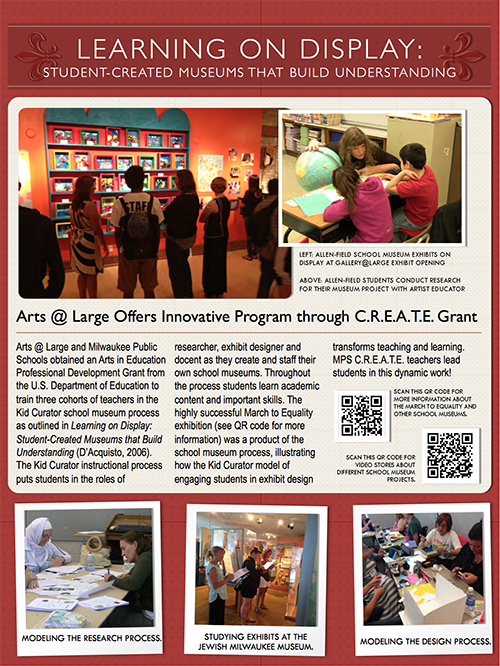Kid Curators Overview
What
Kid Curators® museums are 3-dimensional school exhibitions created by students as part of the classroom curriculum. Students conduct research about the museum topic, design displays to show what they’ve learned, and interpret those displays for visiting audiences. Students of all ages—kindergarten through high school—can create a school museum.
Why
To thrive in today’s world, students must know how to acquire, use, and communicate knowledge creatively. This involves asking and investigating questions, finding and managing information, analyzing and synthesizing ideas, solving problems, collaborating, and creating valuable products. Today’s successful learner is a curator of knowledge.
How
The Kid Curators® model operationalizes the metaphor of kids as curators. In school museum projects, content is reframed as an information “design” problem where students create an exhibition about the topic they are studying. Students learn with a clear purpose in mind—to create an original school museum for the visiting public.
What If
A school museum project will excite your students and engage them in deep learning. Student curators become content experts as they conduct research, write for a unique audience, and communicate with a visiting public. Any curriculum topic can become an interesting museum design project. What will your students create? The possibilities are endless!
A Few Examples
- K-12 Curators
What Kids Learn - Museums at School
knowledge/creativity - Students as
Knowledge Curators - Teaching Content
Through the Arts - Learning On Display Professional Development
 Now, more than ever, students need active, experiential learning opportunities both in and outside of the school setting. With increased pressure to meet academic standards and to do well on accountability measures, Schools are tempted to sacrifice meaningful learning experiences in favor of a narrow focus on test preparation. Museum educators are feeling the pressure as well, and are increasingly aligning their programs to the state and district academic standards. But must this current age of educational reform represent a narrowing of learning opportunities for students? Or is this the time for both Museum and school educators to explore innovative ways to involve students in meaningful learning experiences that are both rigorous and relevant? Programs that involve students in designing and creating community exhibitions are such experiences.
Now, more than ever, students need active, experiential learning opportunities both in and outside of the school setting. With increased pressure to meet academic standards and to do well on accountability measures, Schools are tempted to sacrifice meaningful learning experiences in favor of a narrow focus on test preparation. Museum educators are feeling the pressure as well, and are increasingly aligning their programs to the state and district academic standards. But must this current age of educational reform represent a narrowing of learning opportunities for students? Or is this the time for both Museum and school educators to explore innovative ways to involve students in meaningful learning experiences that are both rigorous and relevant? Programs that involve students in designing and creating community exhibitions are such experiences.





